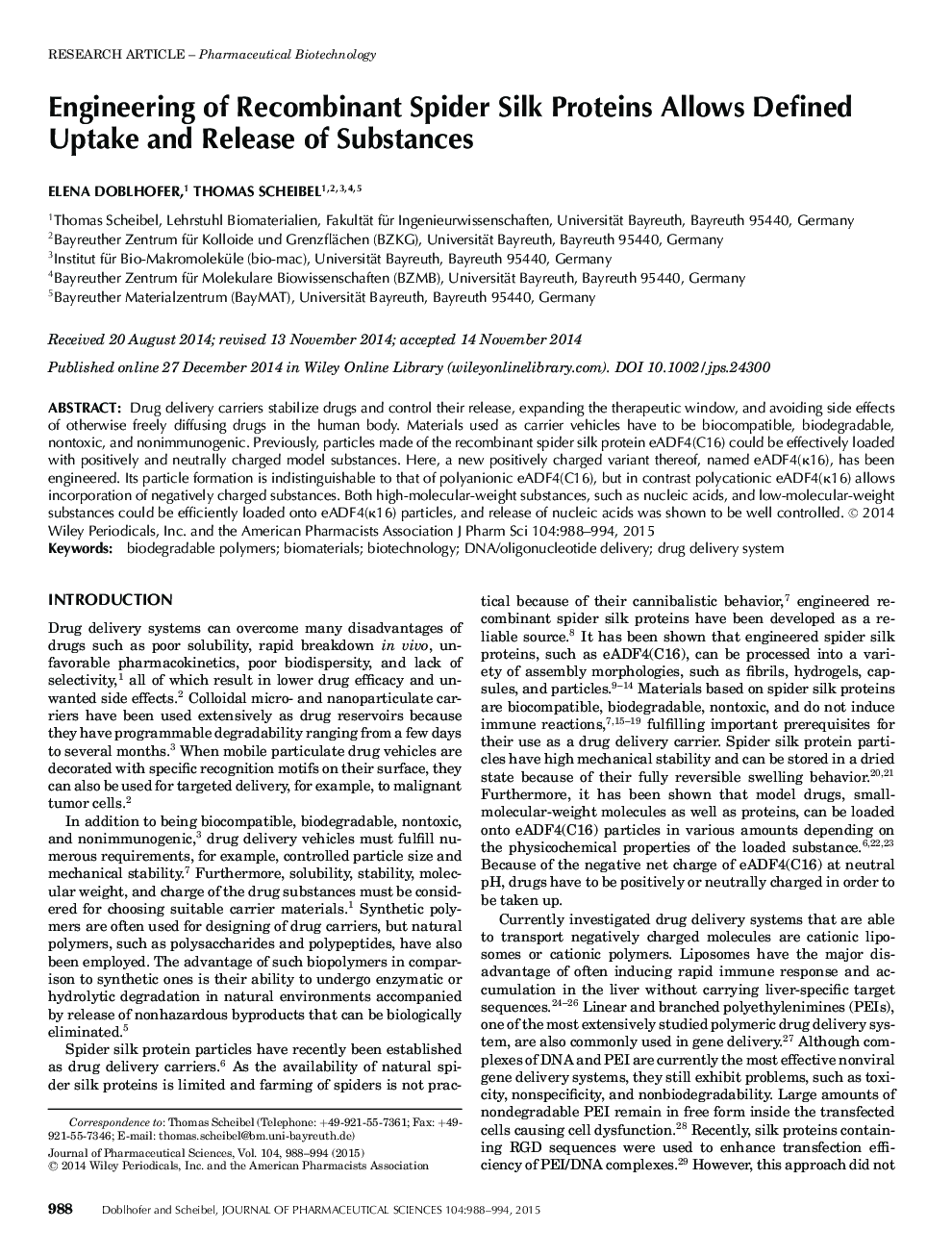| Article ID | Journal | Published Year | Pages | File Type |
|---|---|---|---|---|
| 10162058 | Journal of Pharmaceutical Sciences | 2015 | 7 Pages |
Abstract
Drug delivery carriers stabilize drugs and control their release, expanding the therapeutic window, and avoiding side effects of otherwise freely diffusing drugs in the human body. Materials used as carrier vehicles have to be biocompatible, biodegradable, nontoxic, and nonimmunogenic. Previously, particles made of the recombinant spider silk protein eADF4(C16) could be effectively loaded with positively and neutrally charged model substances. Here, a new positively charged variant thereof, named eADF4(κ16), has been engineered. Its particle formation is indistinguishable to that of polyanionic eADF4(C16), but in contrast polycationic eADF4(κ16) allows incorporation of negatively charged substances. Both high-molecular-weight substances, such as nucleic acids, and low-molecular-weight substances could be efficiently loaded onto eADF4(κ16) particles, and release of nucleic acids was shown to be well controlled. © 2014 Wiley Periodicals, Inc. and the American Pharmacists Association.
Keywords
Related Topics
Health Sciences
Pharmacology, Toxicology and Pharmaceutical Science
Drug Discovery
Authors
Elena Doblhofer, Thomas Scheibel,
